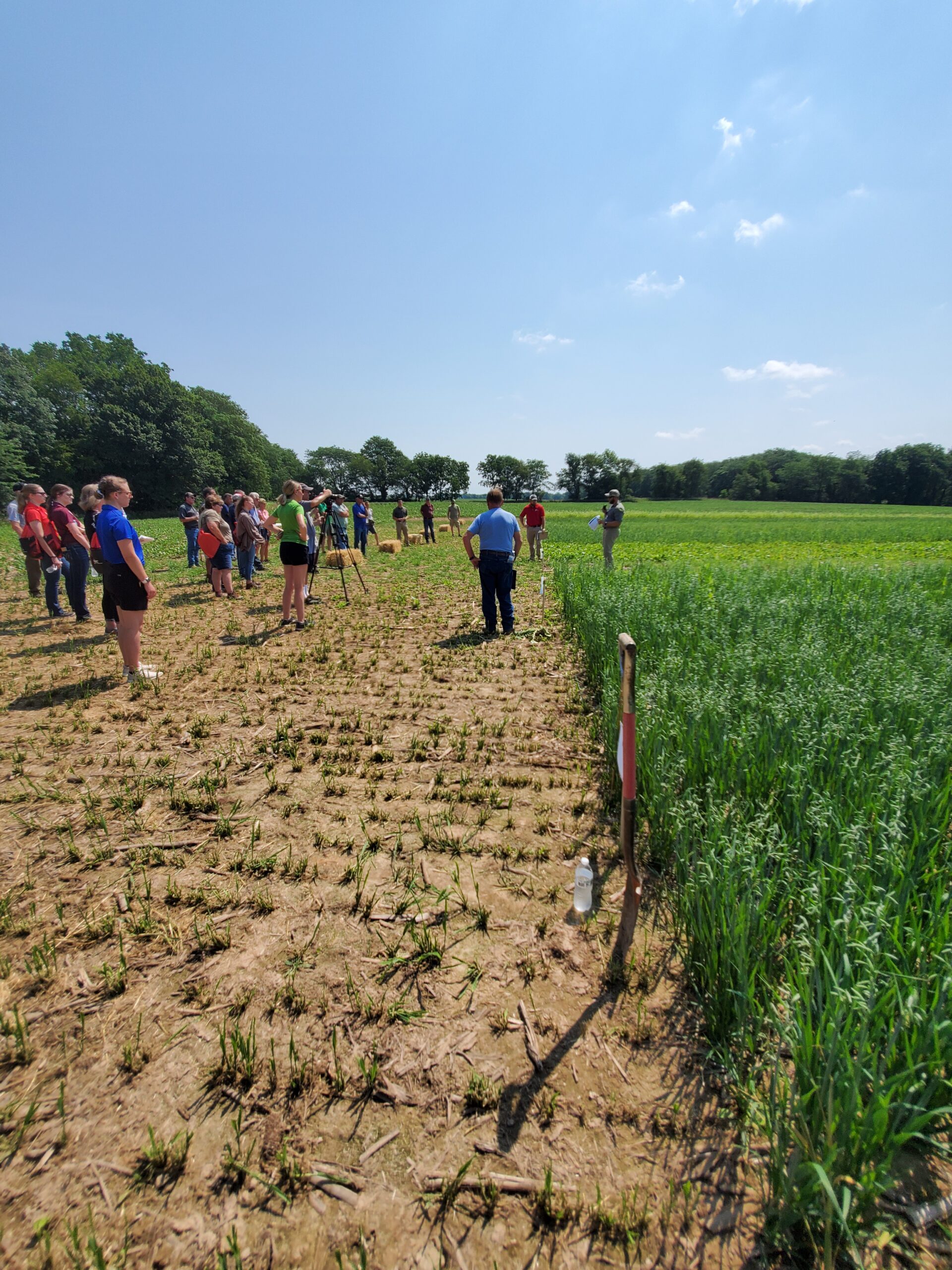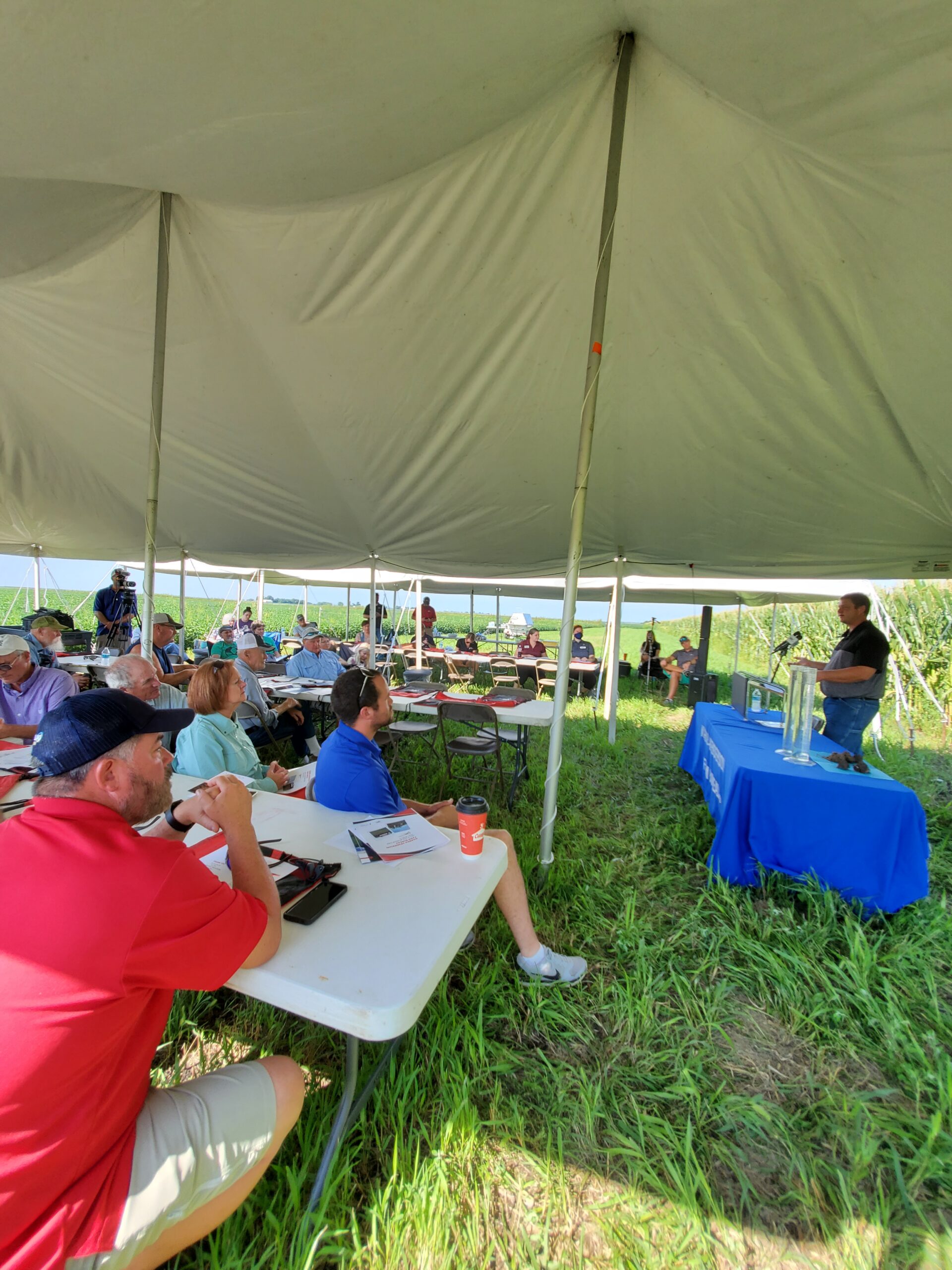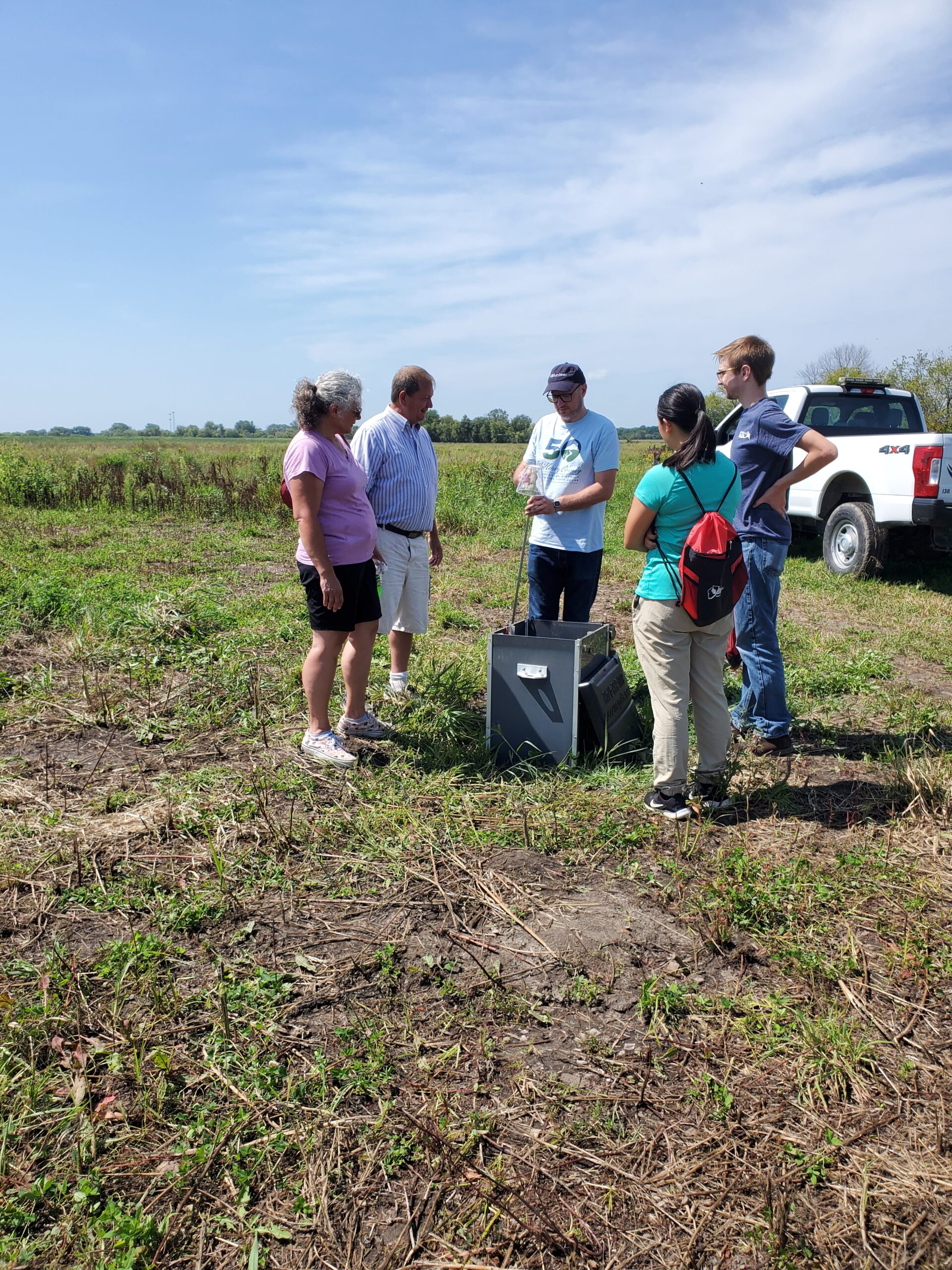Submitted by Illinois Farm Bureau
Cover crops are becoming increasingly popular to manage nutrients in a corn-soybean rotation. But they are not the only practice farmers can implement to enhance nutrient stewardship. In fact, there are multiple strategies that might fit your farm and magnify your impact.
To shed light on some of these strategies, Illinois Farm Bureau (IFB) sponsored a Nutrient Stewardship Grant Program that featured 21 projects across 28 counties this year. Several county Farm Bureaus hosted field days during the spring and summer to showcase how farmers can improve soil health and water quality to address the Nutrient Loss Reduction Strategy (NLRS).
Here are some of the recommendations beyond cover crops that you can try on your farm.
Add Edge-of-Field Practices
Layering in a newer edge-of-field practice can supplement existing in-field nutrient stewardship practices to reduce nutrient runoff and improve water quality. Research shows one such practice, adding a woodchip bioreactor, can remove 20-25% of nitrogen leaving your drainage tile.
What is a woodchip bioreactor? An underground trench constructed so water from your drainage tile can hit an inflow control that routes water into woodchips in the trench. The chips become a food source for bacteria that convert nitrate in the water into stable nitrogen gas. An outflow control structure at the other end holds water in the bioreactor long enough to clean it.
Installing a woodchip bioreactor is relatively easy and can be inexpensive, especially if you seek financial assistance from the Natural Resources Conservation Service (NRCS). Tile diameter, field slope and edge-of-field space available so land does not have to be taken out of production are all considerations. One- to two-inch square woodchips work well for about 10 years before needing to be replaced. Even corncobs can be used, although they only have a two-year lifespan.
Experiment with Nitrogen Efficiency
Several Farm Bureau projects looked at how to maximize nitrogen uptake efficiency, including comparing nitrogen sources, rates and timing. And while the right answer will vary by farm, there are many variables that can be moved around to find the right answer for you.
For example, one trial in strip-till corn in western Illinois found the optimal rate for all nitrogen sources was in the 170-200 pounds per acre range in 2020. The range turned out to be in line with Maximum Return to Nitrogen (MRTN) recommendations any farmer can use.
Plant health plays a role in nitrogen uptake efficiency. Research is underway to understand how adding sulfur, fungicides, micronutrients and more may improve plant health and nitrogen use.
In addition, research regarding understanding variability in nitrogen requirement and response may lead to more precise nitrogen rate recommendations for Illinois corn. A variable rate nitrogen algorithm for yield potential and yield response is being developed that would reduce nitrogen applications without negatively impacting corn yield. Stay tuned for more details.

A volunteer from McHenry County Conservation District (MCCD) demonstrates how water sampling is conducted from the woodchip bioreactor collaboration between MCCD, McHenry County Farm Bureau and the University of Illinois.
Make Livestock Part of the Solution
If you have cattle on your farm, there may be options to better integrate them into your nutrient stewardship strategies. For example, cover crops can be used for forage. Research in south central Illinois with various cover crop forage plots finds feeding forage heals the soil following row crop production and reduces nutrient application needs.
Work is underway to measure relative forage quality, crude protein and net energy for feeding various cover crops. And this way, nutrients leave the farm on a stock trailer, not in the water.
Likewise, research in the same location shows adding five tons of manure per acre and reducing commercial nitrogen use to 69 units per acre still yielded 200-plus bushel corn.

Jacob Baker, Warren-Henderson Farm Bureau Young Leader chair, discusses during the Warren-Henderson Farm Bureau Nutrient Stewardship Field Day, the nitrogen management research that is taking place on his farm in the background.
Focus on Phosphorus
Manure and soil testing can lead to production input savings, help identify where additional inputs may be necessary, improve nutrient stewardship and increase potential return per acre. Research finds shifting manure management to a phosphorus-based removal requirement rather than for nitrogen may improve nitrogen availability to corn via immediate incorporation.
And since phosphorus is less mobile than nitrogen, other research efforts show that phosphorus is not in as short of supply as thought and may not need to be added to fields. This “subsoil phosphorus supply power” under investigation may lead to revised state recommendations for phosphorus applications. Legacy phosphorus in the soil also is present – phosphorus applied years ago that is still in the subsoil. Most phosphorus entering waters today is from streambank erosion and needs to be accounted for – it is not coming from overapplication on farms.

Shay Foulk, farm and ag business consultant, and Austin Omer, Ph.D., Illinois Farm Bureau, share details about the multiple species included in a cover crop plot as part of a Marshall-Putnam Farm Bureau nutrient stewardship project.
Look for Resources
If you’re looking for some direction in managing nutrients on your farm, your county Farm Bureau, local USDA service office or soil and water conservation district may have cost-share or grant dollars available to implement new practices. Funding assistance may also be available through the Illinois Environmental Protection Agency’s 319 program.
To learn more about the 2021 Illinois Farm Bureau Nutrient Stewardship Field Days, click here.




 and then
and then